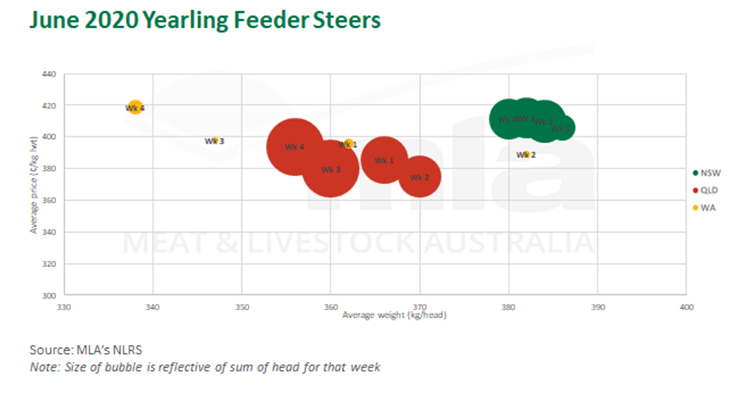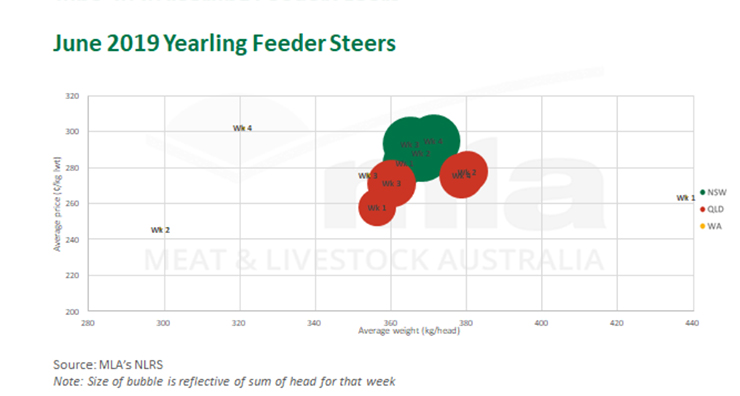Steady build for national feeder market
Key points
- WA store market accelerates
- Southern buyers look to secure lighter cattle
- National feeder market dynamic shifts from last year
Restocker and feeder activity remains high across all states as both buyer groups continue to respond to fluctuating prices and saleyard throughput, while processors are increasingly looking to source finished cattle.
This time last year, processors were buying yearling steers at a premium to feeders, whereas the last few weeks have seen the inverse take place. Showcasing the recent trend was WA. The acceleration of young cattle prices last week affirmed the constant build and strength of the restocker and feeder markets there. In fact, yearling feeder steer prices were stronger than NSW by an average of 8¢/kg. This can be attributed to recent rainfall in south-west WA, restocker competition and the presence of southern buyers sourcing lighter cattle interstate to prop up their operations, spurred on by the abundance of feed and lower supply of light cattle throughout the eastern states.
National Livestock Reporting Service (NLRS) data indicates the majority of yearling steers going through WA saleyards have consisted of more medium specification cattle; 280–400kg live weight with a much smaller percentage of feeder cattle over 400kg.
In contrast, NSW had a high percentage of feeder cattle weighing over 400kg and far less for lighter articles. Victoria had an even higher percentage of heavy feeder cattle, indicative of the dramatic turnaround in season and the supply of more forward stock.
When focusing on the dynamics between all states for the month of June, the NSW feeder steer market is in sync with consistent weights and strong prices going through the saleyards week on week. This is traditionally the case and allows producers to target a more defined specification of cattle and provides the producer with greater assurance. In Queensland, the relationship is slightly more sporadic, despite a much larger throughput of feeder cattle. SA, Victoria and WA have a far greater spread, representing a lower demand and availability of feeder cattle.


When comparing against last year, unsurprisingly, some key trends emerge. For June 2020, feeder steers averaged 15kg more in New South Wales, with Victoria stable on year-ago levels. In New South Wales, supply decreased 50% in June, highlighting the lack of suitable feeder cattle. Western Australia and Queensland averaged 16kg and 6kg lower, respectively this year. Western Australia yardings of feeder steers were up significantly in June, as was Queensland, reiterating the desire from buyers to secure cattle to feed across a broader range of specifications compared to last year.



